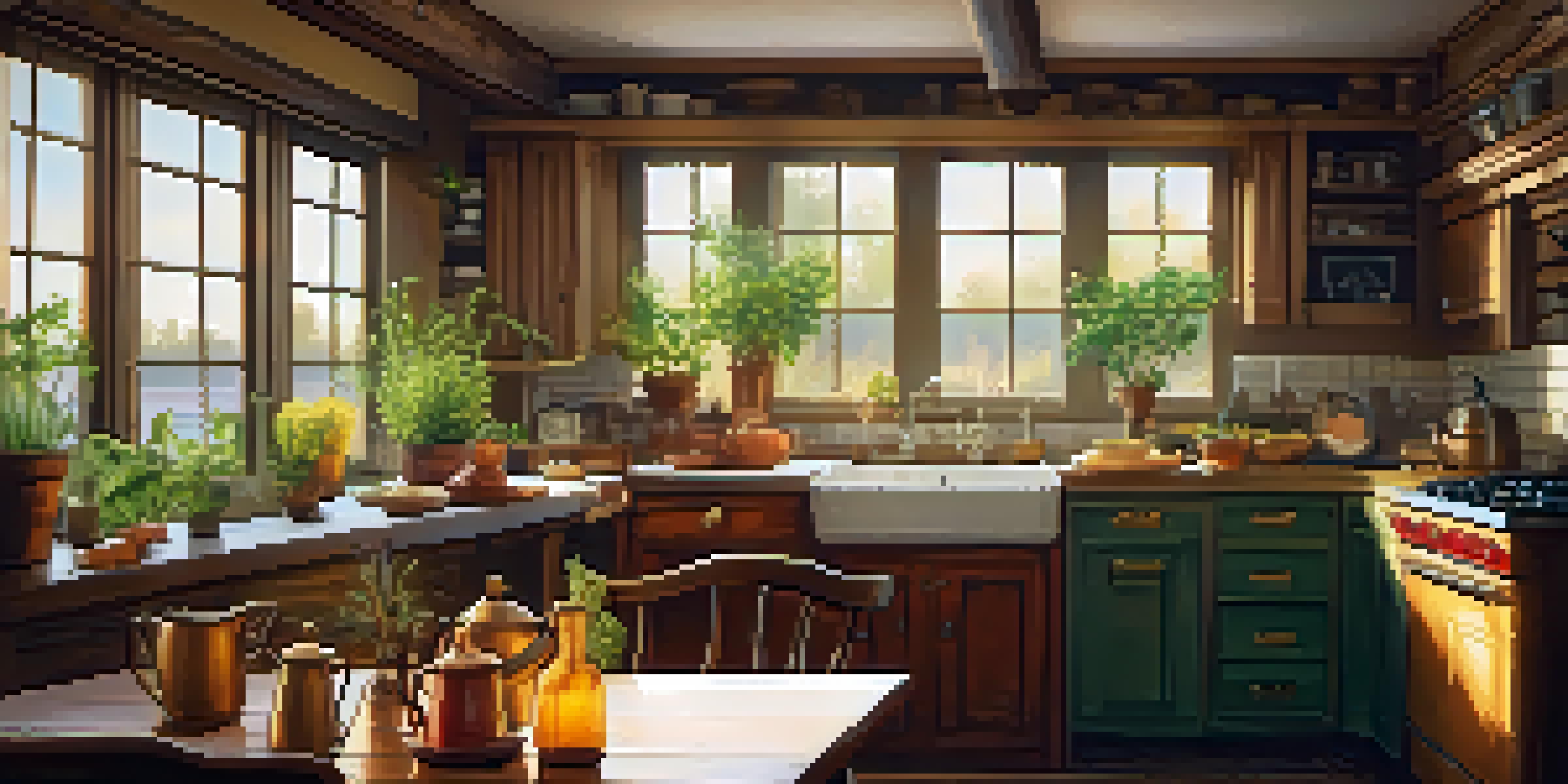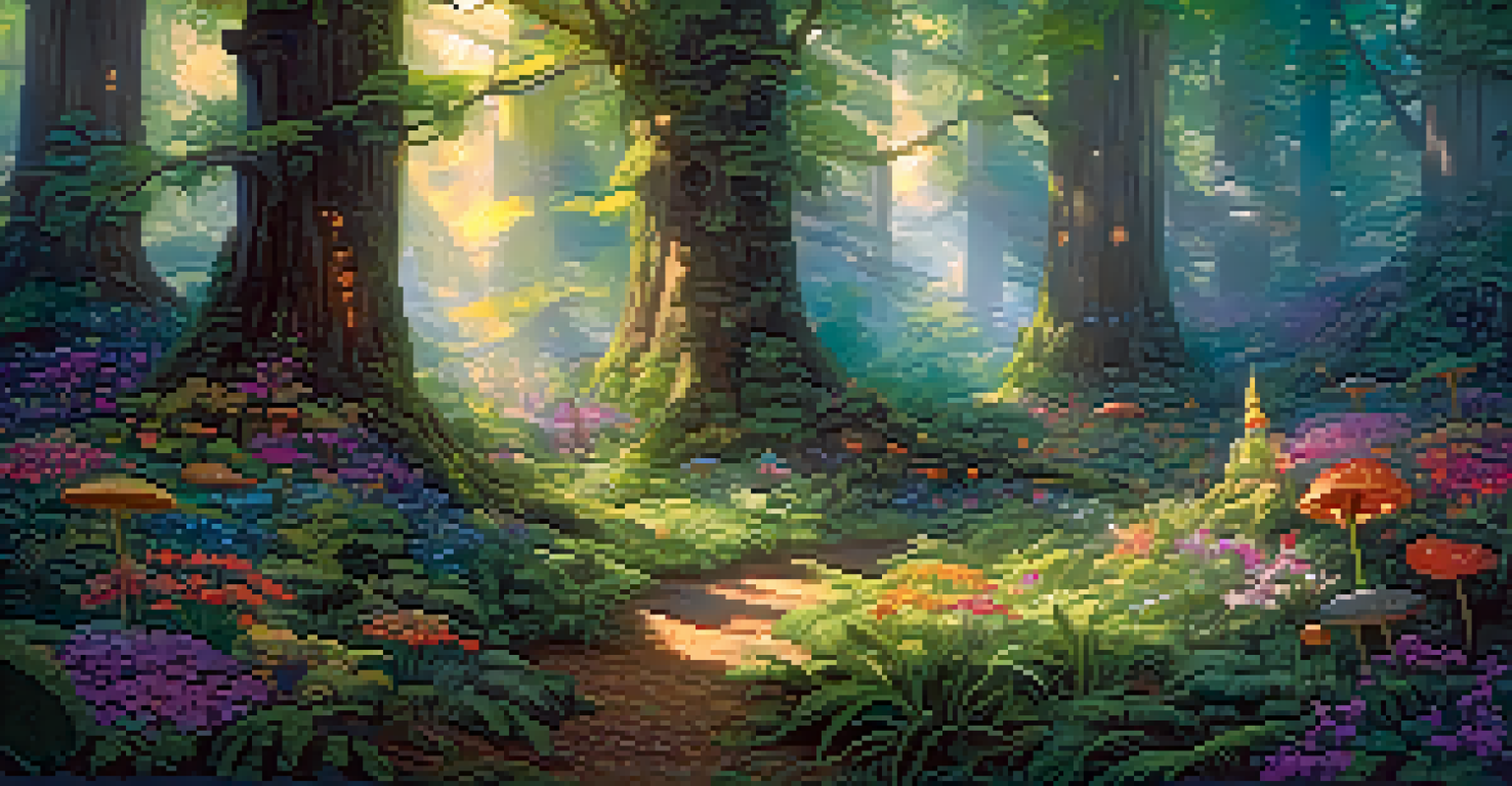Art Direction: The Unsung Hero of Visual Storytelling in Film

Understanding Art Direction in Film Production
Art direction is a crucial aspect of film production that often operates behind the scenes. It involves the visual style and overall aesthetic of a film, including sets, locations, graphics, props, and costumes. Think of it as the film's visual backbone, providing the framework that supports the narrative and emotional tone.
Art is not what you see, but what you make others see.
Without effective art direction, even the most compelling stories can fall flat. The colors, textures, and overall design elements create a mood that guides the audience’s emotions. For instance, the warm hues of a cozy kitchen can evoke nostalgia, while cold, stark environments may instill a sense of unease.
Ultimately, art direction helps filmmakers visually communicate their story to the audience. It's about crafting an immersive experience that invites viewers into the world of the film, making them feel as if they're part of the journey.
The Role of an Art Director in Film
An art director is responsible for bringing the visual vision of a film to life. They collaborate closely with the director and the production designer to ensure that the film's visuals align with the story's themes and characters. This role requires a keen eye for detail and a deep understanding of how visuals can enhance storytelling.

Art directors make numerous decisions, from selecting color palettes to choosing materials for set design. For example, in a historical drama, an art director might meticulously research period-appropriate decor to create an authentic atmosphere. These choices can significantly influence how audiences perceive characters and their journeys.
Art Direction Shapes Film's Mood
Effective art direction creates the visual backbone of a film, influencing audience emotions and enhancing storytelling.
In essence, the art director acts as a bridge between the script and the screen's visual reality. Their work not only shapes the film's look but also reinforces the emotional beats of the narrative.
Color Theory: A Key Tool for Art Direction
Color theory plays a pivotal role in art direction, impacting viewers' emotions and perceptions. Different colors evoke different feelings; for example, blue can convey calmness, while red often symbolizes passion or danger. An art director uses these principles to create a visual language that complements the film's narrative.
The details are not the details. They make the design.
Consider the film 'The Grand Budapest Hotel', where Wes Anderson's use of a pastel color palette creates a whimsical and nostalgic atmosphere. The deliberate choice of colors enhances the quirky storytelling and helps the audience connect with the film's unique style.
By skillfully applying color theory, art directors can guide audience emotions and reinforce the story's themes, making every frame a visual narrative in itself.
Set Design: Building Worlds from Imagination
Set design is another critical component of art direction, where physical spaces are crafted to transport audiences into fictional worlds. The art director collaborates with a team of designers, builders, and artists to create sets that reflect the film's tone and enhance the narrative. This could range from a bustling city street to a serene forest glade.
A great example of set design is seen in 'Avatar', where elaborate and immersive environments were created to depict the alien world of Pandora. The attention to detail in the set design not only provides a stunning visual experience but also serves to ground the story in a believable reality.
Collaboration Enhances Visual Narrative
The partnership between art direction and cinematography is crucial for crafting a cohesive and immersive viewing experience.
Through set design, art direction helps establish the context for character interactions and plot developments, making the film’s world feel tangible and engaging.
Costume Design: Characterization Through Clothing
Costume design is a vital aspect of art direction that contributes to character development and storytelling. The clothes characters wear can reveal their personalities, social status, and even emotional states. An art director must work closely with costume designers to ensure that every outfit aligns with the film's visual aesthetic.
For instance, in 'The Great Gatsby', the opulent costumes reflect the extravagance of the Roaring Twenties, enhancing the film's themes of wealth and excess. The costumes not only serve as visual spectacles but also help to establish the characters' identities and motivations.
By thoughtfully integrating costume design into the overall art direction, filmmakers can create a richer, more immersive narrative that resonates with the audience.
The Impact of Art Direction on Audience Perception
Art direction significantly influences how audiences perceive a film and its characters. A well-crafted visual style can evoke specific emotions and reactions, guiding viewers’ interpretations of the story. For example, a dark, moody atmosphere can create tension and suspense, while bright, vibrant visuals might foster a sense of joy or adventure.
Consider films like 'Pan's Labyrinth', where the contrasting art direction between the grim reality and the enchanting fantasy world powerfully affects audience engagement. The stark differences draw viewers deeper into the narrative, making them feel the weight of the characters' struggles.
Costumes Reflect Character Identity
Thoughtful costume design not only contributes to the film’s aesthetic but also reveals key aspects of characters' personalities and motivations.
Ultimately, effective art direction shapes not just what viewers see, but how they feel and connect with the story, enhancing their overall cinematic experience.
The Collaboration of Art Direction and Cinematography
Art direction and cinematography work hand in hand to create a cohesive visual narrative. While art direction sets the stage with colors, props, and set designs, cinematography captures and frames these elements to tell the story visually. The interplay between these two disciplines can significantly enhance a film's impact.
For example, in 'Blade Runner 2049', the stunning visuals are a result of both art direction and cinematography. The art direction established a striking dystopian world, while the cinematography used lighting and camera angles to heighten the film's mood and themes.

This collaboration ensures that every frame of the film is not only visually captivating but also serves a purpose in advancing the story, making the viewing experience all the more immersive.
Conclusion: Celebrating the Art of Art Direction
Art direction is often the unsung hero of visual storytelling in film, yet its impact is undeniable. It shapes the audience's experience, enhances character development, and reinforces the narrative through carefully curated visuals. Without it, films would lack the depth and richness that draw viewers in.
As we celebrate the art of filmmaking, it’s essential to recognize the artistry behind art direction. From set designs to color choices, every detail is meticulously crafted to create a cohesive and engaging story.
In the end, art direction is more than just a visual element; it's a powerful storytelling tool that invites audiences to experience the film in a profound and meaningful way.